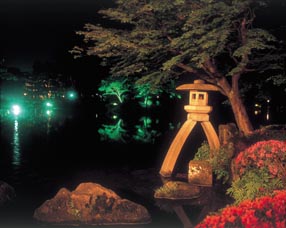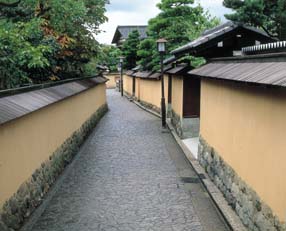Kanazawa
Kanazawa is a leading tourist city where 7 million tourists visit every year. It was a great castle town ruled by an influential leader from the 17th century to the second half of the 19th century. Kanazawa has not suffered from any war devastation or big natural disaster up to now. Therefore, Kanazawa maintains rows of historical houses and inherits traditional handicrafts and traditional performing arts.
Kenrokuen Garden (7 minutes by walk)

Kenrokuen Garden is a beautiful Japanese garden with an area of 11.4 hectares located on the heights of the central part of Kanazawa and next to Kanazawa Castle. The Maeda family, who ruled the Kaga Clan (the present Ishikawa and Toyama areas) in feudal times, maintained the garden from generation to generation. From its scale and beauty, it is regarded as one of the most beautiful feudal lords' gardens in Japan.
Nagamachi Samurai Houses (2 minutes by walk)
The residences of two of the eight chief retainers of the Kaga Clan were located in the Naga-machi area, where top- and middle-class samurais (members of a feudal powerful military class) lived. With the arrival of the modern age, the appearances of the houses changed. The alleys and the mud walls of nagayamon gates (row house gates), however, still maintain the sight of the old days. A mud wall is made with stones and mud put into a mold and hardened. The roof is covered with thin wooden plates. Although mud walls that passed more than 100 years remain, most of the mud walls in the area were restored ones.

Kanazawa Castle Park (7 minutes by walk)
In 1583, Lord Maeda Toshiie, who was Toyotomi Hideyoshi's first retainer, moved to Kanazawa. The Maeda family resided in Kanazawa Castle and governed the Kaga Clan (the present Ishikawa and Toyama areas) for more than 280 years henceforth. The castle tower was burned down by a fire in the past and has not been rebuilt, but other fortress buildings were reconstructed repeatedly. The Ishikawamon Gate, which was rebuilt in 1788, and the Sanjikken Nagaya (50-yard-long warehouse), which was rebuilt in 1858, still remain. Both of them have been designated as Japan's important cultural assets.

Movie is here.


